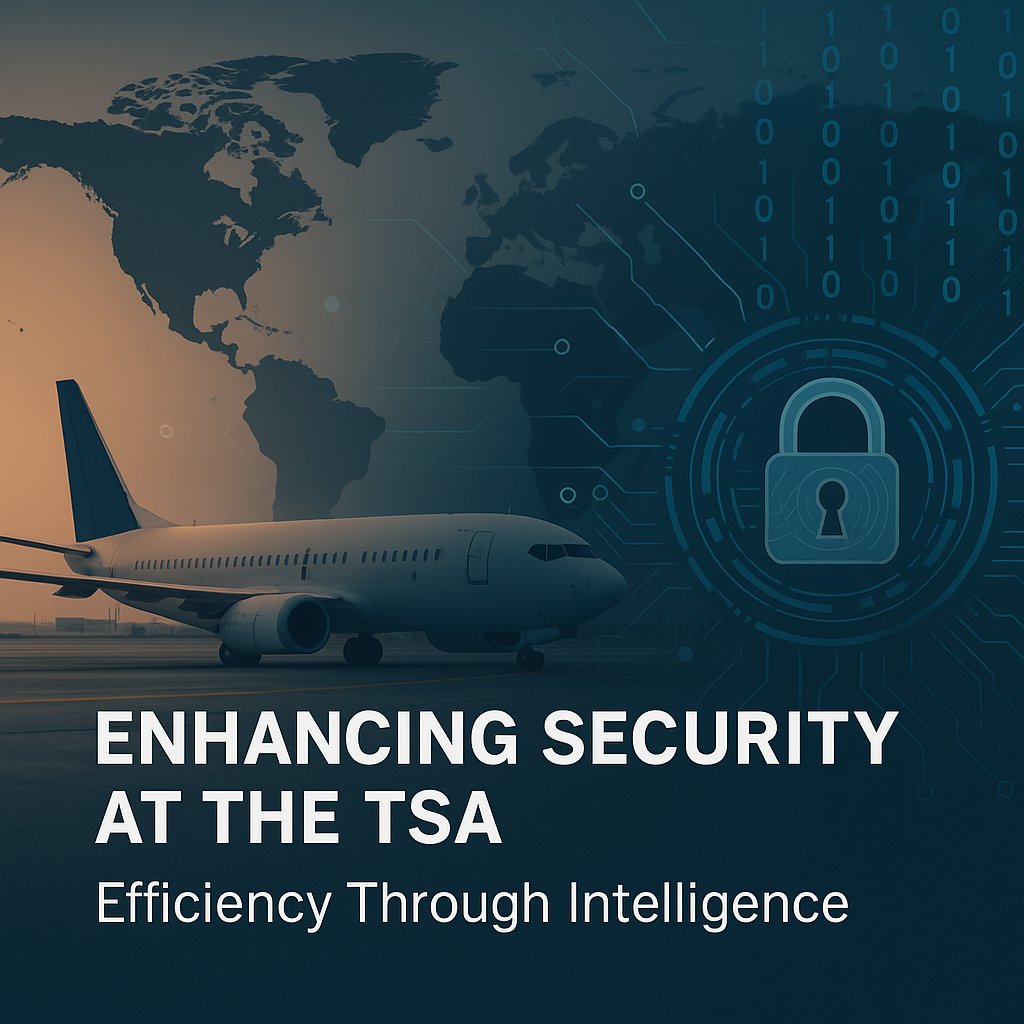When we think about aviation security, we often look outward—external threats, foreign actors, or emergent risks. But just as critical is how we operate internally: how data is shared, how resources are deployed, and how fast we respond to change.
TSA’s Secure Flight Program and Vetting and Analysis Division (VAD) perform one of the most time-sensitive missions in government: assessing passenger risk before wheels-up. This is where technology must work in lockstep with mission—because every second counts.

To support this, TSA has been advancing operational resilience through:
- AI/ML-Powered Vetting – Real-time anomaly detection and risk-based prioritization sharpen threat assessment and improve outcomes
- Integrated Dashboards – Power BI-based dashboards enable dynamic, decision-ready visibility for leadership
- Scalable Infrastructure – Zero-downtime, secure configurations support uninterrupted mission execution
- Predictive Resource Planning – Staffing forecasts improve throughput across all federalized airports
- Compliance-Driven Design – Aligned with FISMA, FedRAMP, and Executive Order 13960
These aren’t just technical improvements—they are mission multipliers. Modernization at TSA is not about replacing systems; it’s about reinforcing outcomes.
At Stock Group Analytics, we believe operational design should be treated as a national security capability.
Real-Time Analytics in Action: Use Case Scenarios
How is your agency aligning mission with modernization? Are operational workflows helping or hindering your security goals?
TSA – Enhancing Airport Screening Operations
Scenario:
During peak holiday travel, the Vetting Analysis Division (VAD) experienced a surge in passenger volume, including travelers flagged for secondary screening by multiple international partners. Traditionally, this would have overwhelmed analysts, leading to processing delays.
SGA’s Impact:
With SGA’s AI/ML-powered vetting workflows and real-time dashboards already in place, VAD was able to automatically prioritize high-risk passengers using anomaly detection models trained on travel behavior, reservation patterns, and historical threat data. Executive dashboards dynamically updated to reflect alert volume, staffing coverage, and resource strain, enabling supervisors to reallocate personnel in real time.
Outcome:
TSA reduced manual review time, maintained throughput without compromising security, and prevented a potential backlog from affecting national screening timelines. This real-time operational agility would not have been possible under legacy workflows.
SecureFlight #MissionEngineering #OperationalResilience #TSA #GovCon #AIinGovernment #HomelandSecurity #DigitalModernization #DataOps #PublicSafety #ZeroTrust #AFCEA
